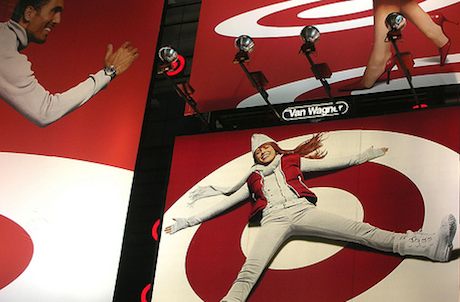Target Promotion Misses Bullseye: A Tale of Four Blunders
What seemed like a fantastic marketing campaign, turns out to be a horror story. Metrics were missed, warning signs ignored and US retailer, Target ends up 'doing a Hoover'.
As with so many promotions, it started with a terrific deal for customers. Visit Target's Facebook page and get a $10 gift card for spending $50. What happened next was a free-for-all with deal hunters gaming the system, some claiming profits of $5,000. So, what went wrong?
Blunder #1: Ignoring Those Pesky Rules
Even though the promotion stated 'gift card purchases were ineligible', users of Slick Deals, a bargain hunters forum, discovered that this rule wasn't being enforced. Arnold Tijerina on the bslashc blog explains,
"They would buy a $50 Target gift card, use the coupon and get a $10 Target gift card free. They would then purchase another $50 Target gift card using the FIRST $50 Target gift card to pay for the SECOND Target gift card, use another coupon and get another $10 Target gift card. (Initial purchase: $50. Profit: $20. etc.) Rinse and repeat."
If that wasn't bad enough, claims of $5,000 profits were compounded by people who used the free gift cards to buy Amex and Mastercard gift cards, which could be spent anywhere, not just Target.
Blunder #2: Bad Metrics, Bad Decisions
On the face of it, the stats that the offer generated must've looked fantastic. Picture the scene: whoops and high-fives at HQ. Trouble is those numbers taken in isolation don't reveal the full picture. Tracking the purchases used to reclaim the coupons would have quickly revealed something going awry.
To be fair, this data may not have been available in real-time, but after four days the promotion was closed down. And then mysteriously, re-opened on Dec 7th for another 4 days.
Blunder #3: Hearing But Not Listening
If the warning signs weren't ringing loud enough from the metrics, the frenetic activity on Slick Deals was an opportunity missed. When the offer first launched the forum thread $10 Target GiftCard w/ Purchase of $50 or More (Printable Coupon) quickly grew, it now stands at 51 pages.
Turns out news of deals that are too good to be true travels quickly. When the promotion re-opened a few days later, the new thread was even more popular, with a current total of 101 pages of replies.
Maybe Target wasn't aware? Perhaps their social media monitoring wasn't up to scratch. Erm, turns out they knew. Arnold Tijerina comments,
"It’s hard to believe that someone somewhere connected to Target isn’t watching this. In fact, based on statements made by the Slickdeals moderators, Target was aware (however minimally) of the thread since they asked SlickDeals not to post a PDF or image of the coupon. I’m sure they wanted the web traffic to their website versus to SlickDeals."
I can understand how the first opportunity to stop the marketing carnage was missed. Fair enough. Metrics take a little while, people need to be alerted, outlets need contacting. But to re-open it after the initial frenzy? Ouch.
What this underlines, yet again, is how quickly a group of like-minded individuals can be brought together online to 'solve' a problem for the group benefit.
Blunder #4: Old School Tech: The Photocopier
To claim the $10, deal hunters needed a coupon, which required the installation of software to stop the coupon being downloaded and printed multiple times. The problem? No unique identifier on the coupon. Cue, the trusty photocopier et voila! As many coupons as your heart desires.
It's an error we've all made. Focus too much on the technology that's right in front of us, and not considering enough use-cases for a product, service or promotion. Easily done, a good reason for some thorough testing whether that's UX, user-testing or in this case, perhaps a thought exercise.
Photo (cc) ATIS547. Via: bslashc blog.



